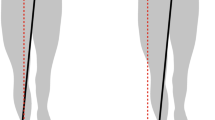Abstract
In order to robustly analyze the gait of Parkinson’s disease (PD) patients, a new gait phase discrimination method was developed for analyzing the three-axis accelerations of the ankle during walking. The magnitude of acceleration was compared with the lowpass-filtered signal of itself and pseudo foot-flat phases were determined. Four narrow windows were made sequentially and adaptively from the pseudo foot-flat phases. Each window contained a characteristic peak that discriminated the gait phases. From these windows, the initial contact (IC) point and end contact (EC) point were determined by finding the maximal point in the proximal–distal acceleration. Seven healthy individuals and 17 PD patients were subjected to a walking test on level ground for a distance of 6.5 m with the wearable activity monitoring system (W-AMS). Foot pressure and movement images were simultaneously recorded as references. The ICs and ECs detected by the proposed algorithm were compared with the manually marked events in the foot pressure signals. In healthy subjects, all the ICs and ECs were correctly detected. In the PD group, the detection accuracy was 97.6% for the ICs and 99.4% for the ECs. Based on these results, this novel method holds promise for use in monitoring temporal gait parameters continuously in PD patients, which will subsequently allow for the evaluation of motor fluctuations in PD patients.








Similar content being viewed by others
References
Ahlskog JE (2000) Medication strategies for slowing the progression of Parkinson’s disease. In: Adler CH, Ahlskog JE (eds) Parkinson’s disease and movement disorders: diagnosis and treatment guidelines for the practicing physician. Humana Press, New Jersey, pp 101–114
Allen FR, Ambikairajah E, Lovell NH, Celler BG (2006) Classification of a known sequence of motions and postures from accelerometry data using adapted Gaussian mixture models. Physiol Meas 27:935–951
Aminian K, Rezakhanlou K, De Andres E, Fritsch C, Leyvraz PF, Robert P (1999) Temporal feature estimation during walking using miniature accelerometers: an analysis of gait improvement after hip arthroplasty. Med Biol Eng Comput 37:686–691
Angeloni C, Riely PO, Krebs DE (1994) Frequency content of whole body gait kinematic data. IEEE Trans Rehabil Eng 2:40–46
Blin O, Ferrandez AM, Serratrice G (1990) Quantitative-analysis of gait in parkinson patients - increased variability of stride length. J Neurol Sci 98:91–97
Dewey RB (2000) Clinical features of Parkinson’s disease. In: Adler CH, Ahlskog JE (eds) Parkinson’s disease and movement disorders: diagnosis and treatment guidelines for the practicing physician. Humana Press, New Jersey, pp 71–84
Dewey RB (2000) Clinical features of Parkinson’s disease. In: Adler CH, Ahlskog JE (eds) Parkinson’s disease and movement disorders: diagnosis and treatment guidelines for the practicing physician. Humana Press, New Jersey, pp 71–84
Everett T (2005) Measuring and analysing human movement. In: Trew M, Everett T (eds) Human movement: an introductory text, 5th edn. Elsevier, Churchill Livingstone, pp 137–154
Foerster F, Fahrenberg J (2000) Motion pattern and posture: correctly assessed by calibrated accelerometers. Behav Res Methods Instrum Comput 32:450–457
Hausdorff JM, Schaafsma JD, Balash Y, Bartels AL, Gurevich T, Giladi N (2003) Impaired regulation of stride variability in Parkinson’s disease subjects with freezing of gait. Exp Brain Res 149:187–194
Hoehn MM, Yahr MD (1998) Parkinsonism: onset, progression, and mortality. Neurology 50:B1–B16 [Reprinted from Neurology, vol 17, pp 427–442, 1967]
Hughes AJ, Daniel SE, Kilford L, Lees AJ (1992) Accuracy of clinical diagnosis of idiopathic Parkinson’s disease: a clinico-pathological study of 100 cases. J Neurol Neurosurg Psychiatry 55:181–184
Jasiewicz JM et al (2006) Gait event detection using linear accelerometers or angular velocity transducers in able-bodied and spinal-cord injured individuals. Gait Posture 24:502–509
Lau HY, Tong KY, Zhu HL (2008) Support vector machine for classification of walking conditions using miniature kinematic sensors. Med Biol Eng Comput 46:563–573
Morris ME, Huxham F, McGinley J, Dodd K, Iansek R (2001) The biomechanics and motor control of gait in Parkinson disease. Clin Biomech 16:459–470
Nieuwboer A, Dom R, De Weerdt W, Desloovere K, Fieuws S, Broens-Kaucsik E (2001) Abnormalities of the spatiotemporal characteristics of gait at the onset of freezing in Parkinson’s disease. Mov Disord 16:1066–1075
Paulson HL, Stern MB (eds) (2004) Clinical manifestations of Parkinson’ disease. In Movement disorders: neurologic principles & Practice, 2nd edn. McGraw-Hill Professional
Perry J (1992) Gait analysis: normal and pathological function. SLACK, New Jersey
Sabatini AM, Martelloni C, Scapellato S, Cavallo F (2005) Assessment of walking features from foot inertial sensing. IEEE Trans Biomed Eng 52:486–494
Salarian A et al (2004) Gait assessment in Parkinson’s disease: toward an ambulatory system for long-term monitoring. IEEE Trans Biomed Eng 51:1434–1443
Schrag A (2007) Epidemiology of movement disorders. In: Jankovic J, Tolosa E (eds) Parkinson’s disease & movement disorders, 5th edn. Lippincott Williams & Wilkins, Philadelphia, pp 50–66
Stebbins GT, Goetz CG (1998) Factor structure of the unified Parkinson’s disease rating scale: motor examination section. Mov Disord 13:633–636
Veltink PH, Bussmann HBJ, Vries Wd, Martens WLJ, Lummel RCV (1996) Detection of static and dynamic activities using uniaxial accelerometers. IEEE Trans Rehabil Eng 4:375–385
Webster D (1968) Critical analysis of the disability in Parkinson’s disease. Mod Treat 5:257–282
Williamson R, Andrews BJ (2000) Gait event detection for FES using accelerometers and supervised machine learning. IEEE Trans Rehabil Eng 8:312–319
Zijlstra W, Hof AL (2003) Assessment of spatio-temporal gait parameters from trunk accelerations during human walking. Gait Posture 18:1–10
Acknowledgments
This study was supported by the Korean Science and Engineering Foundation under Advanced Biometric Research Center Program.
Author information
Authors and Affiliations
Corresponding author
Rights and permissions
About this article
Cite this article
Han, J., Jeon, H.S., Yi, W.J. et al. Adaptive windowing for gait phase discrimination in Parkinsonian gait using 3-axis acceleration signals. Med Biol Eng Comput 47, 1155–1164 (2009). https://doi.org/10.1007/s11517-009-0521-5
Received:
Accepted:
Published:
Issue Date:
DOI: https://doi.org/10.1007/s11517-009-0521-5




